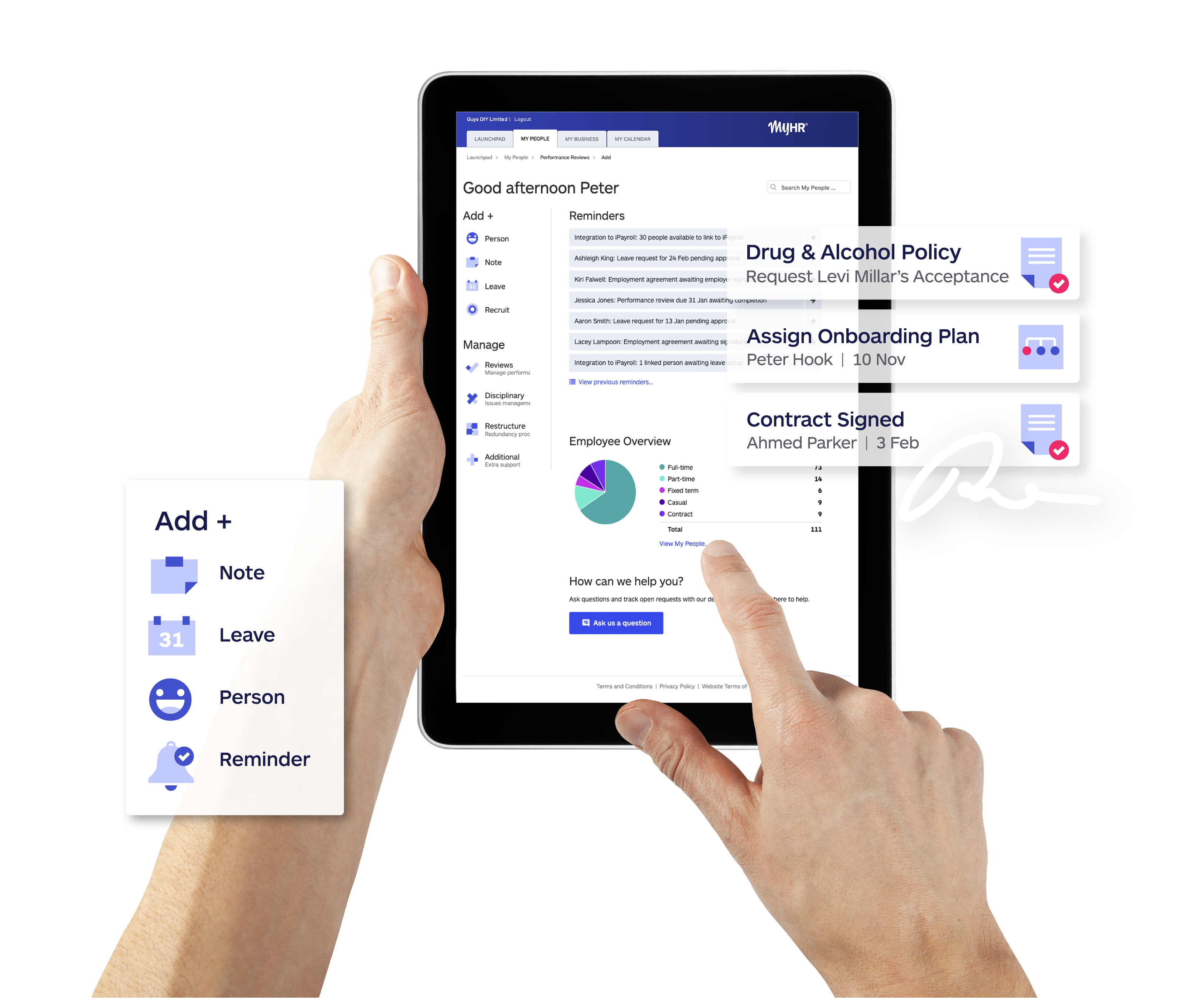When it comes to hiring in today’s labour market, talented people are looking for more than just an attractive salary. Employees want to work for organisations that offer a range of benefits and values, from a strong company vision and culture and to meaningful opportunities to learn and progress.
An employee value proposition (EVP) is the range of factors that make your company a great place to work and what employees gain by joining. It’s a combination of what a company does, its culture, how it rewards its people, and how people interact.

So let’s have a look at what an EVP means, how it helps attract and retain good employees, and how you can build a clear, consistent, and engaging EVP.
What does employee value proposition mean?
The term ‘Employee Value Proposition’ (or EVP) refers to the range of rewards, benefits, and values an organisation offers to its employees in return for their work.
Basically, your EVP answers the question: "Why would someone work for us instead of someone else?"
Your EVP is a relationship between you and your people and it is something that exists even if you are unaware of it, because the reasons your employees start and continue to work for you (or not) are your EVP.
Benefits of a strong employee value proposition
Attracting and retaining good staff is a challenge for many companies. A well-thought-out (and articulated) EVP should be seen as the cornerstone of your efforts to attract and nurture talented employees, and it should align what your people expect of the organisation with its overall goals and vision.
Specifically, a strong EVP benefits your organisation in these ways:
- Attraction: Helps attract talented people who feel rewarded by, and aligned with, the company's values and goals.
- Retention: Employees who are satisfied in their work and feel valued and supported are more likely to stay with you for longer. Research and advisory firm, Gartner, found organisations that effectively deliver on their EVP can decrease annual employee turnover by 69% and increase new hire commitment by nearly 30%.
- Engagement: Morale and performance improves when employees feel their needs and aspirations are being met.
- Brand awareness: People are more aware than ever of company brands, and employees, potential employees, and customers want to know what you stand for and how you treat people.
Top 5 components of a great employee value proposition
A solid EVP typically has 5 main components:
- Compensation – Competitive salary, bonuses, and other financial incentives, e.g. equity, profit-sharing.
- Benefits – The range of perks you offer on top of wages and bonuses, whether it’s health insurance, extra paid time off or parental leave, wellness programs, club memberships etc.
- Career development – Promotion opportunities, training, mentoring, and other learning resources.
- Work environment – Your company culture, leadership style, team dynamics, work-life balance and flexibility.
- Values and purpose – The organisation’s mission, social impact, sustainability, values, and ethics.
Steps for developing a compelling employee value proposition for your business
Creating a compelling EVP is all about clearly defining what makes your company an attractive and rewarding place to work and then being able to communicate those strengths to employees and potential employees.
Here's a quick guide to help you build a strong EVP:
Understand your current state
The starting point is finding out what you are currently offering employees and how they perceive it. There are a lot of parts that make up an EVP, so this can take some effort.
It’s essential to get employee feedback because what you offer your people and what they think of those offerings can be quite different. You also want to understand if there are things your employees need that they feel they aren’t getting.
There are lots of ways to get employee input, whether that’s conducting surveys, holding focus groups, or interviewing recent hires. You should also be conducting exit interviews, so you can clearly understand why people leave your company.
You also need to honestly assess your culture and how you do things, as well as benefits and development opportunities.
Identify what makes you special
This is all about figuring out what sets your company apart from others. Many organisations focus on pay and financial incentives, but many companies can compete at that level so it’s not necessarily what will set you apart (research has also found that material offerings don’t have an enduring impact on employee retention).
Here are some key questions to answer:
- What things do we offer that competitors don’t?
- What do employees consistently praise?
- What kind of culture do we have, and who thrives here?
Small to medium-sized businesses without the resources of larger organisations can still build an attractive EVP even if you’re unable to compete on remuneration. Think of all the things your business has to offer, whether that’s your team environment, your mission, location, job satisfaction or flexibility.
Build your EVP pillars
Structure your EVP around the 5 core elements we discussed earlier: remuneration, benefits, career development, work environment, and your purpose and values.
Be systemic
Building a strong EVP isn’t something you do just because it’s the zeitgeist. You need to approach it in an integrated way, so all the facets are connected.
Widening your range of benefits might improve your recruitment efforts or please some of your existing staff, but you will get better results if those measures are coordinated with efforts to improve all aspects of your EVP.
Understand, too, that no one person or department has total control over your EVP. It’s made up of many parts and they all affect each other.
Craft your EVP statement
Once you have designed your EVP and put the internal processes in place, you need to be able to communicate it to employees and the external labor market. A good way to do this is to come up with an EVP statement that is concise and inspiring, summing up what employees get from working there in an authentic way that reflects the organisation’s vision and personality.
Here’s a basic example of an EVP statement:
“At Green Good Co, we‘re all about making a meaningful impact and realise we’re only as good as our people. We want you to grow with us and thrive in a culture of purpose, innovation, and support.”
Communicate your EVP and deliver on promises
Once you have your EVP statement you can share it consistently across your channels, including:
- Job descriptions.
- Company website(s) and social networks.
- Internal communications.
- Recruitment efforts.
- Onboarding materials.
How successful your EVP is will depend not only on how you communicate it, but also on how you fulfil the things that it promises. There is no use designing and promoting an attractive EVP if the organisation can’t deliver what it offers - empty promises will only damage staff motivation and retention efforts.
Review and update regularly
You may not see overnight miracles, so approach your EVP as a long-term, living project. Your business and workforce will continue to evolve, and so should your EVP.
Schedule in regular reviews, and measure your EVP’s effectiveness through your employee retention/turnover rates, and staff performance and engagement metrics. Keep up to date with wider market trends, and gather feedback from your team on changes to their expectations and requirements.




